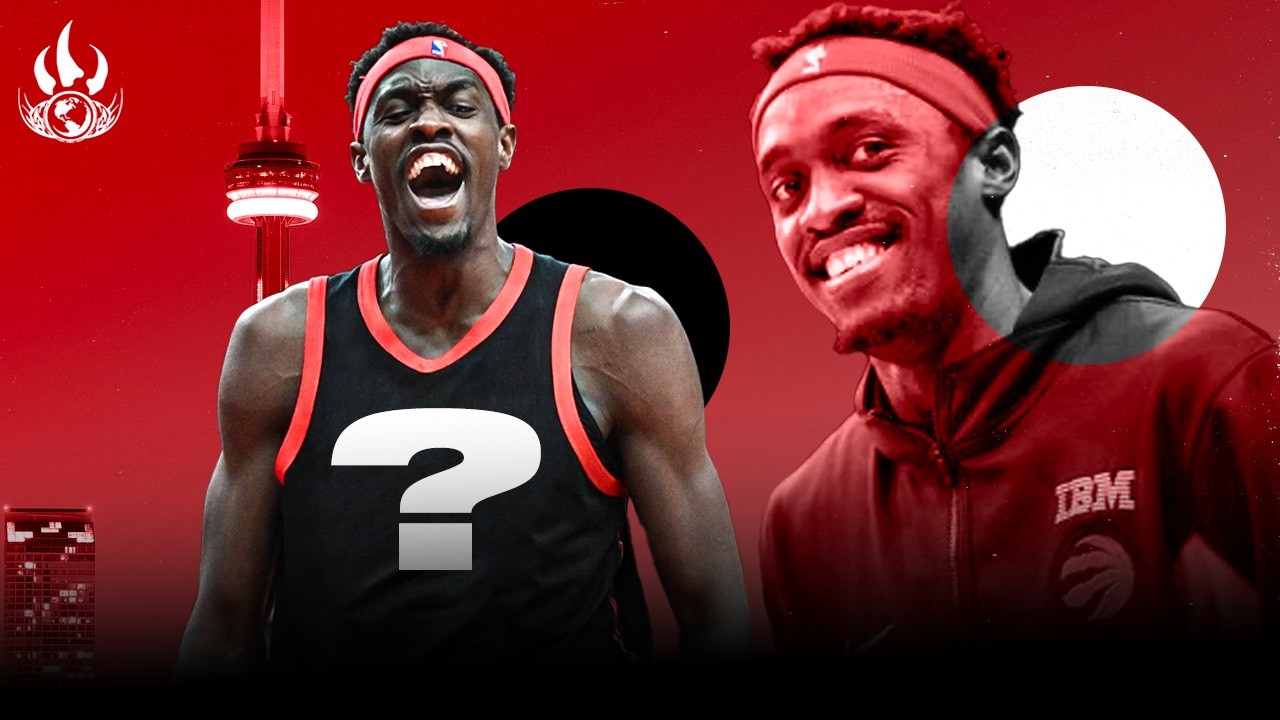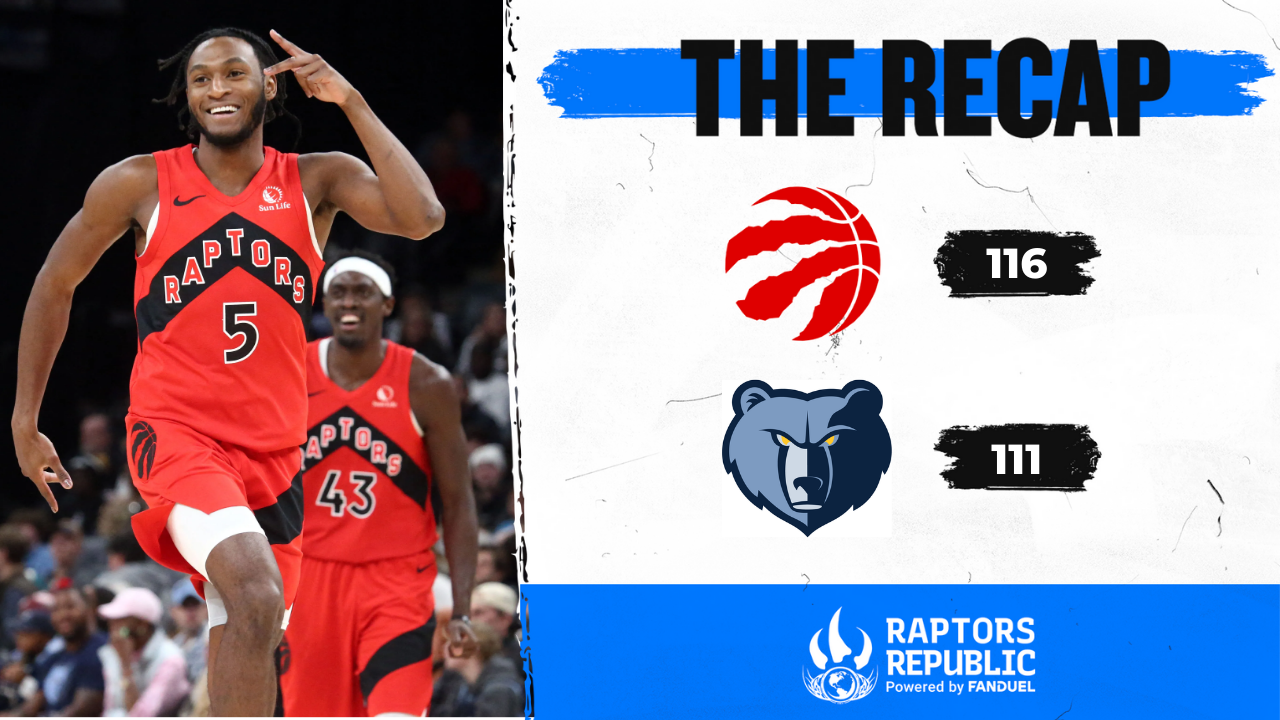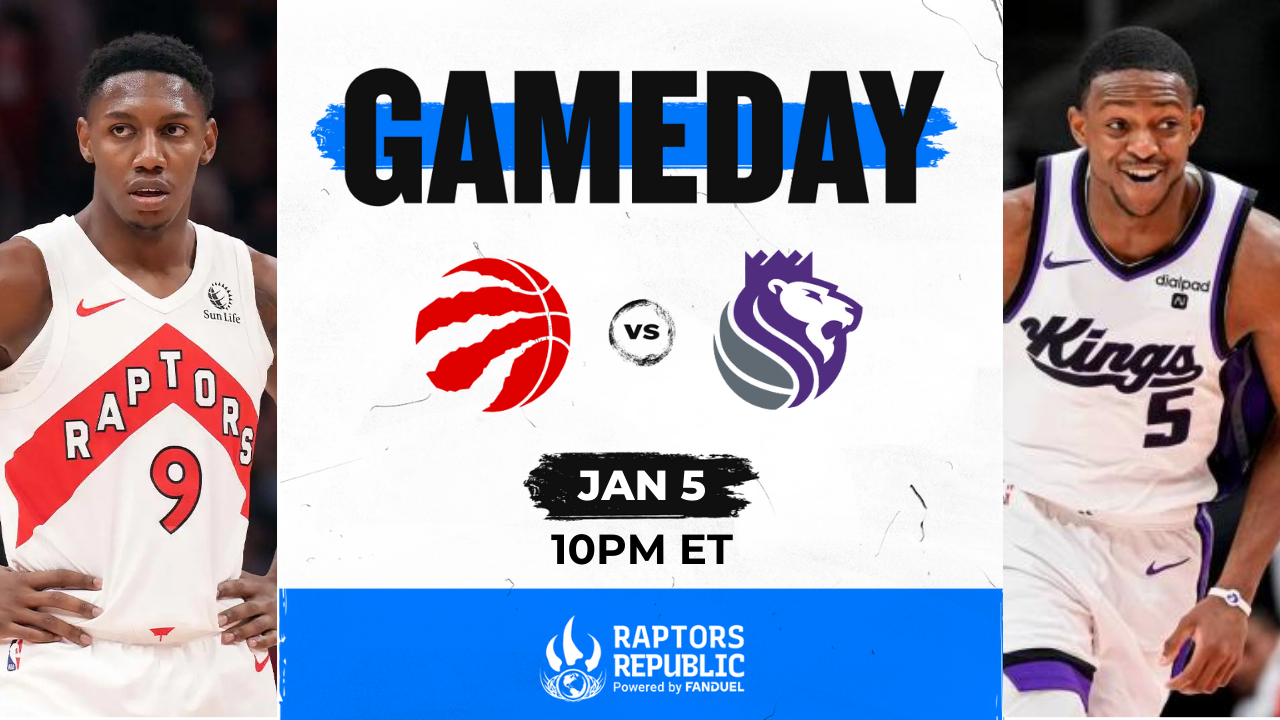It has been a torturous three years for Toronto Raptors fans.
Conjecture and debates and recriminations and prophesies bounced around like a biblical town square. Perhaps, a testament to an indecisive management; perhaps, a testament to the irrationality of fandom and the post-modern demand for immediacy. Perhaps, all of the above.
Regardless, with the O.G. Anunoby trade this past weekend, there is [some] clarity and [a wee bit of] of tranquility.
Nick Nurse is gone. Fred VanVleet is gone. O.G. is gone. The old core is gone. New beginnings. Mostly.
Only Pascal Siakam [and Chris Boucher] remains. And with him, the final element of discourse. To trade Pascal Siakam or to re-sign him. A symbolic debate over the next era of Raptors basketball.
Either a redesign of the roster [I prefer redesign to retool] with the intention of competing within the next one to three years. Or, a total teardown and rebuild with a much longer line of sight to winning.
The former making Pascal a Raptor likelier; the latter less so.
The Pascal Siakam Situation
Rumours have swirled around Pascal’s trade candidacy since the Raptors sudden faltering last year, and have not stopped. Atlanta, Indiana, and Sacramento were among the earliest buzzards to circle; more teams have expressed interest of late. Pascal now replaces O.G. Anunoby as every pundit’s trade machine darling. The chatter and speculation to only intensify until the February 8th trade deadline approaches – a consequence of Masai Ujiri’s renown hard-bargaining.
Pascal’s free agency situation remains equally unsettled. He is eligible for a maximum contract worth around $42.6 million per annum, according to Sportsnet’s Blake Murphy. Pascal has expressed interest in remaining a Raptor – music to the ears of a woeful Free Agent destination. So far, talks with Toronto have stalled for reasons unknown.
What we do know is that the passing of the December 30th deadline means the Raptors can no longer both re-sign and trade Pascal this season. Nor can any team acquiring Pascal re-sign him for more than two years. Anything longer must wait until the offseason.
Pascal has, reportedly, claimed he would not sign the two-year extension rendering his trade value lower than it otherwise would be. No team will pay full price for a player able to walk months later.
The Toronto Raptors Situation
This is the Masai Ujiri situation.
Not only is Masai hard-headed in trade negotiations, he’s demonstrably loath to rebuilds. Never before with a sputtering team has Masai “blown it up”. Not in Denver. Not in Toronto. (Tampa Bay the exception, but even then it was like pulling teeth to do it.)
He’s not against trading his “best players”. When he does, Masai seeks young, up-and-coming, or cheap players – not picks – in return.
In Denver, he turned Carmelo Anthony into Danilo Gallinari, Timothy Mozgov, and Wilson Chandler and a few picks. In Toronto, he exchanged Rudy Gay for Patrick Patterson, John Salmons, Greivis Vasquez, and stuff; Kyle Lowry was almost traded for Metta World Peace, Iman Shumpert, and a first rounder; and, finally, DeMar DeRozan and Jakob Pöltl swapped for Kawhi Leonard and Danny Green.
Trading O.G. Anunoby for RJ Barrett and Immanuel Quickley suggests a similar approach. New York was not the only O.G. suitor. Masai, allegedly, rejected multiple draft picks last deadline seeking young players under team control instead.
Scottie spontaneously evolving into a blossoming Superstar over night makes a complete teardown, from Masai’s perspective, all the less probable. Any trade of Pascal for draft picks, alone, would misalign with Scottie’s new timeline.
The Scottie Barnes Situation
The real question is what is best for Scottie Barnes.
One could argue that stripping the Raptors down to Scottie Barnes and parts – Quickley, Barrett, and Gradey Dick – makes the most sense. Scottie is the future. This current roster not best-suited to his needs.
But rebuilds are a dark, nebulous world to explore. Few teams intentionally do so and succeed swiftly. The teams we see now surging – Philly, Oklahoma City, Orlando, Sacramento, Houston – had undergone years of transformation or endured multiple iterations of “rebuilds” prior to finding themselves. Some, like Detroit and San Antonio, remain adrift. There are never any guarantees draft picks hit.
A rebuild and all its toil can adversely affect rising stars’ development too. Rebuilding teams need stability and some success. Without it, young players are susceptible to the listlessness and dejection losing engenders. Cade Cunningham and crew experience that now. Jalen Green will likely be fine, but his last two years have jeopardized his career.
Scottie will need stability. His emotional volatility is a good thing, but more vulnerable, seemingly, to the despair of piling losses – as most would. Pascal Siakam is that stability.
The Pascal Siakam and Scottie Barnes Situation
There is not enough data to evaluate the Scottie-Pascal tandem wholly. Only this year has the two-headed hierarchy been established. Their potential as a pair hindered by an unbalanced roster ill-suited to complement their respective talents.
Still, we’ve witnessed enough to know they can succeed together. Each are averaging over 20 points and at least 5 assists a game on a 50% effective field goal rate or better.
Analytics suggest a similar cohesion. With the two of them on the floor, the Raptors are in the 67th percentile for points scored per 100 possessions and in the 58th percentile for point differential. With only Scottie on the floor, the offensive production plummets to the third percentile. With just Pascal, the team remains in the 62nd percentile. Who needs whom?
They are not positionally or spatially redundant either. Yes, there is overlap. Both prefer to attack in the mid-range. Both like to slither or boar their way into the guts of stout men. Both backdown lesser defenders. Both are nominally “4s”. That does not rule out coexistence.
Particularly, when so much of what they do complements each other. Two particle accelerators gravitationally warping defences unveiling new opportunities for each other and their teammates. Their usage is most on the team and assist percentages in the 90th percentiles for their respective positions. Other than Dennis Schröder, they pass to each other most on the team.
Their domains are similar but also expanding: Scottie, a sudden three-point shooter (73rd percentile); Pascal, a midrange master (75th percentile); each incrementally improving in the other’s wheelhouse: Pascal up to 39% from three in his last 15 games; Scottie more comfortable with contested mid-range jumpers (68th percentile in long mid-jumpers).
They’re also distinctly different in their approaches to the game.
Scottie is the point-forward. He attacks and roams in spurts of instinctive fervour. Creation is his intent; he learns to hunt mismatches in the process. He loves finding the open man on cuts, on drives, on post ups. He races in transition and hovers above onlookers to find others or to loft fadeaways and floaters. Scottie rebounds with ferocity at both ends and demands tough defensive assignments. He’s become an off-ball daemon skying from the weakside.
Pascal is the scorer. Methodical and purposeful. His mirth comes in the calculated disembowelment of unbalanced defenders. A myriad of spins, fakes, and pivots his instruments. He’s learned to become a good passer, but a hunter always eats first. His rebounding is understated. He survives most defensive matchups and is an elite team defender scuttling to and fro actions to stifle probes, switch across positions, and close out shooters far out of reach.
In so many ways, they are each others’ foil. In demeanour, in stratagem, in prowess. But what Scottie needs in an ideal team roster, so, too, does Pascal. Shooters, dynamic guards, and stalwart perimeter defenders. They’ve yet to experience that at its optimal. Though, the recent addition of Quickley and Barrett bring hope.
There are ample examples of Star-forward pairs – Giannis Antetokounmpo and Kris Middleton, LeBron James and Anthony Davis, Jimmy Butler and Bam Adebayo – who operate in similar hemispheres but have enough diversity in their games to balance one another.
There’s no reason Scottie and Pascal cannot accomplish the same. Age gap aside, these two are a fearsome duo.
The Trading Pascal Siakam Situation
What this all means for Pascal depends.
Masai could still demand a decent return despite Pascal’s expiring contract. Desperation and supply-and-demand can motivate otherwise wary teams. Struggling contenders or overzealous optimists are more willing to take risks. Golden State and Sacramento come to mind. Others might backchannel their way into a wink wink future deal. A deep playoff run or an elaborate team vision can do much to change a player’s mind too.
But trading Pascal comes with complications. For one, teams wanting Pascal’s services are likely contending; they’ll not give way foundational pieces – young or not. There might not be enough to convince Masai to execute the exchange. Restricting potential partners to those inundated with talent – New Orleans – or willing to upgrade a younger core piece – Oklahoma City.
For two, there is no guarantee younger, prospective players turn out. Theoretical trades including Benedict Mathurin, Jalen Johnson, Josh Giddey, Keegan Murray, among others, are tantalizing, but their respective potential remains unknown. The Raptors cannot afford to make big swings and miss with Scottie’s emergence imminent. Especially, with such a known quantity in Pascal already.
For three, acquiring a plethora of young players is not entirely straight forward. A roster full of rookie deals, restricted free agents, and fresh contracts can hamper future flexibility. It’s a good problem to have, but having too many players to pay at once forces decisions to be made earlier than a team would prefer. Oklahoma City faces that reality soon with some prospects still unproven – Tre Mann and Ousmane Dieng, for example.
None of these reasons are convincing alone, but must be factored into a trading Pascal algorithm.
What Happens to Pascal Next?
All signs point towards a Pascal Siakam extension.
Masai is no rebuilder. He will not unload Pascal for anything less than a similarly skilled player or two. Unless there is some kind of O.G.-New York-CAA-love triangle-type situation between Pascal and an unknown suitor, a monster package is highly unlikely with his expiring contract. Pascal would fetch a much greater bounty next trade deadline.
Most importantly, Scottie Barnes has ascended. Finding a second or third All-Star to complement him is of the utmost importance and urgency. Pascal is an elite scorer, and plus-defender. A combination rarer than rare. One that complements Scottie’s own evolving skillset well.
Pascal has never had a roster built for him. Nor has Scottie. Until such an experiment is proven inviable – the Raptors 2-0 with its newest overhaul – the two together for the foreseeable future is the most logical path forward.



